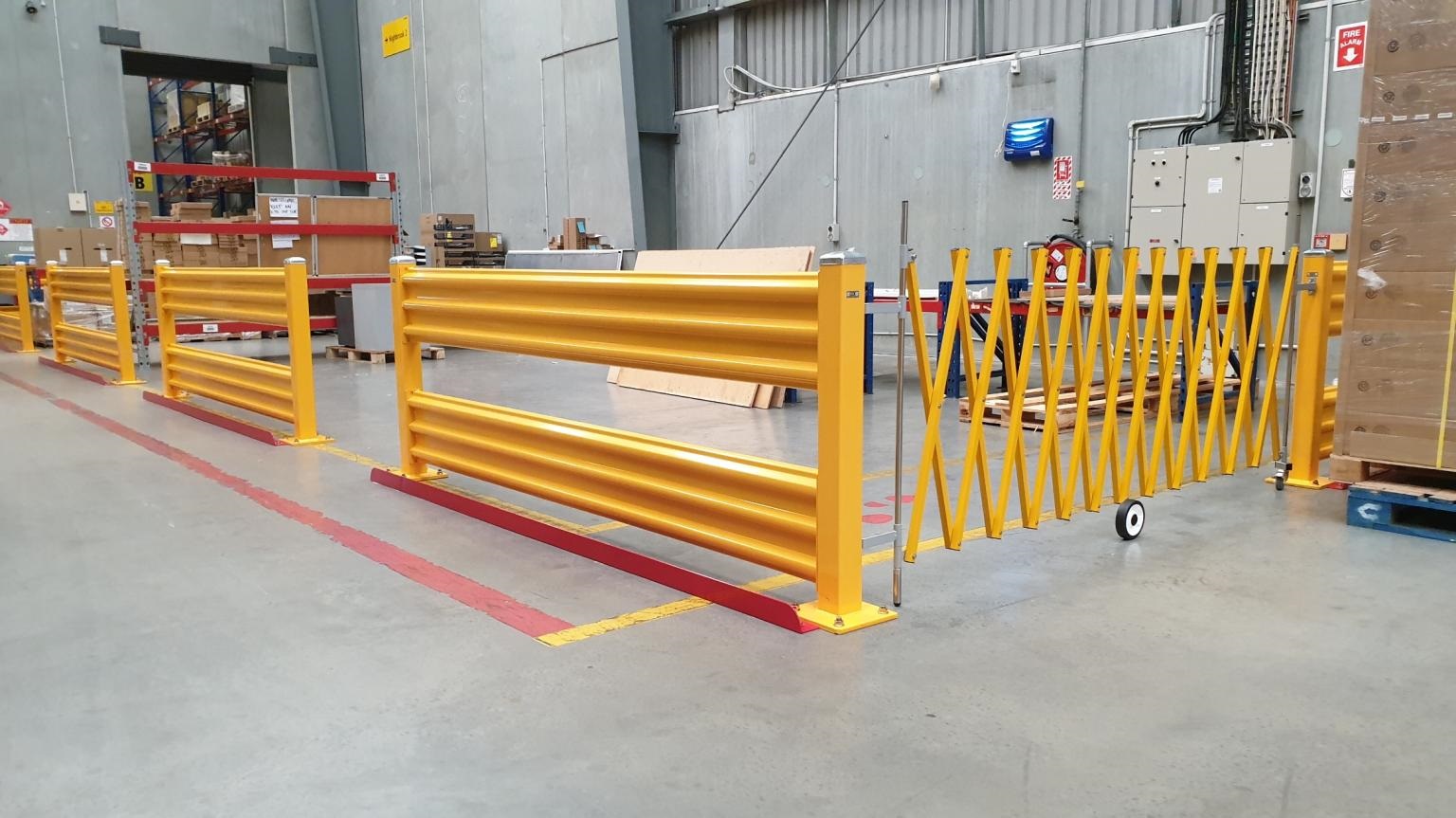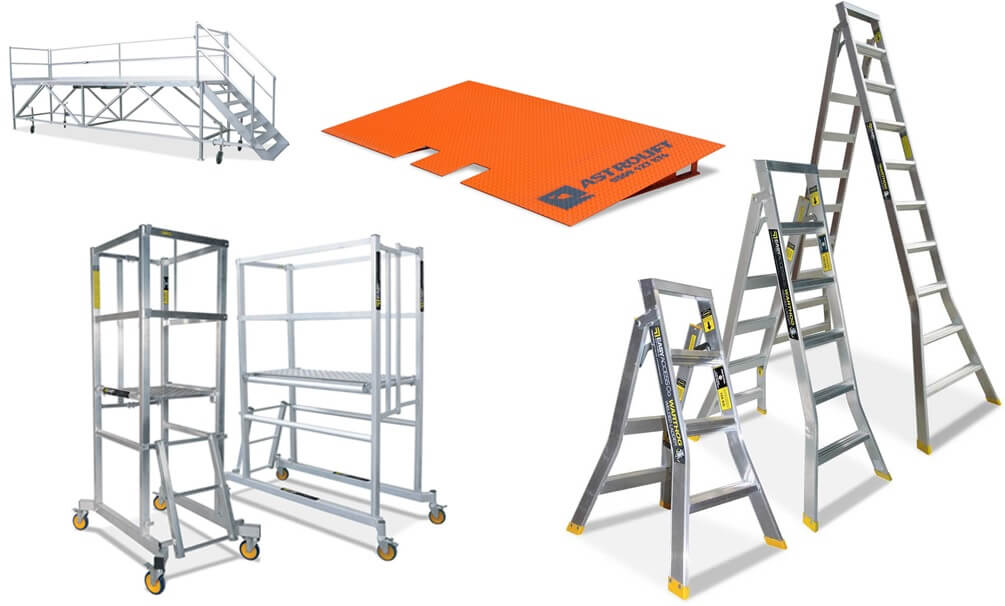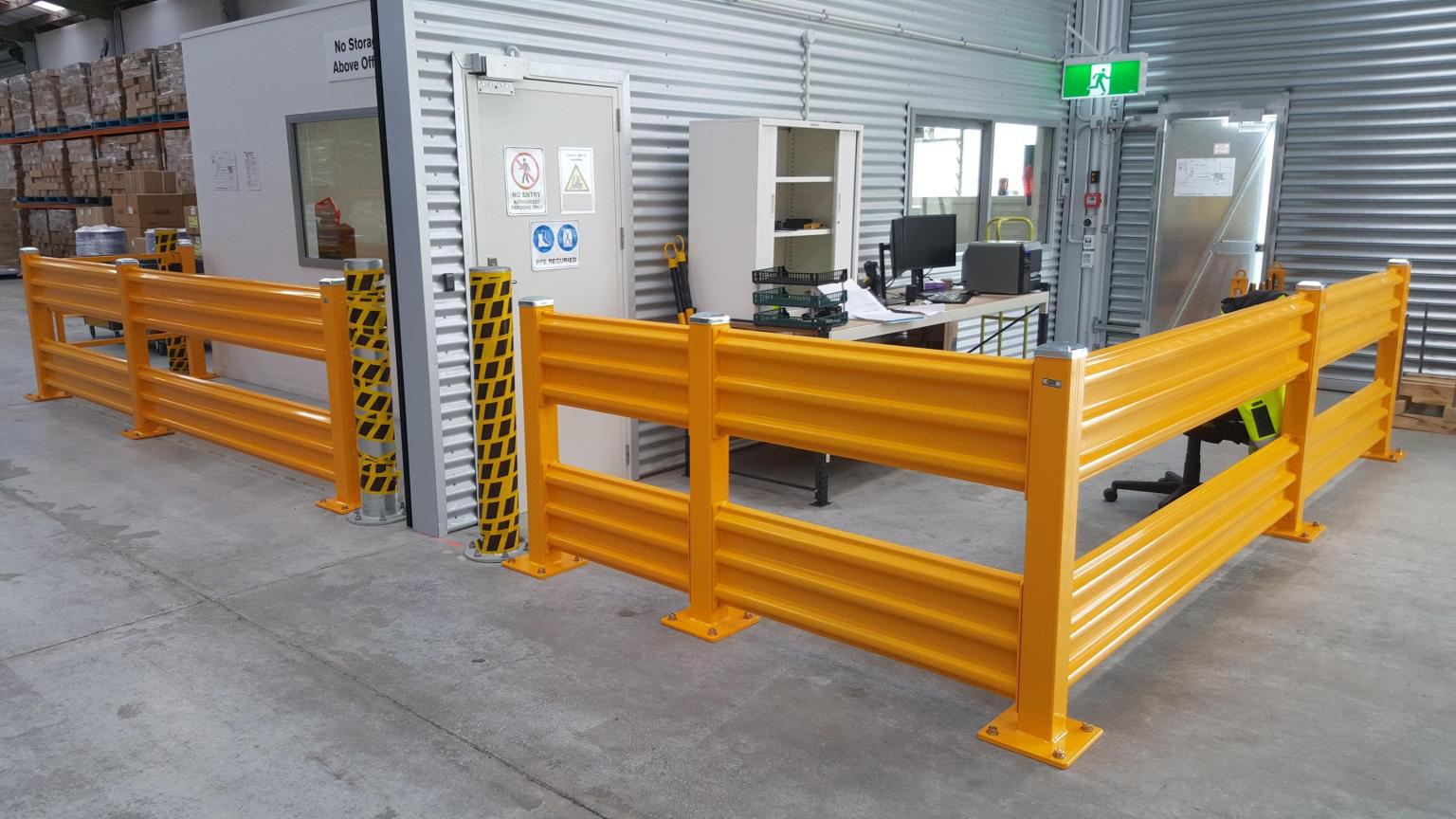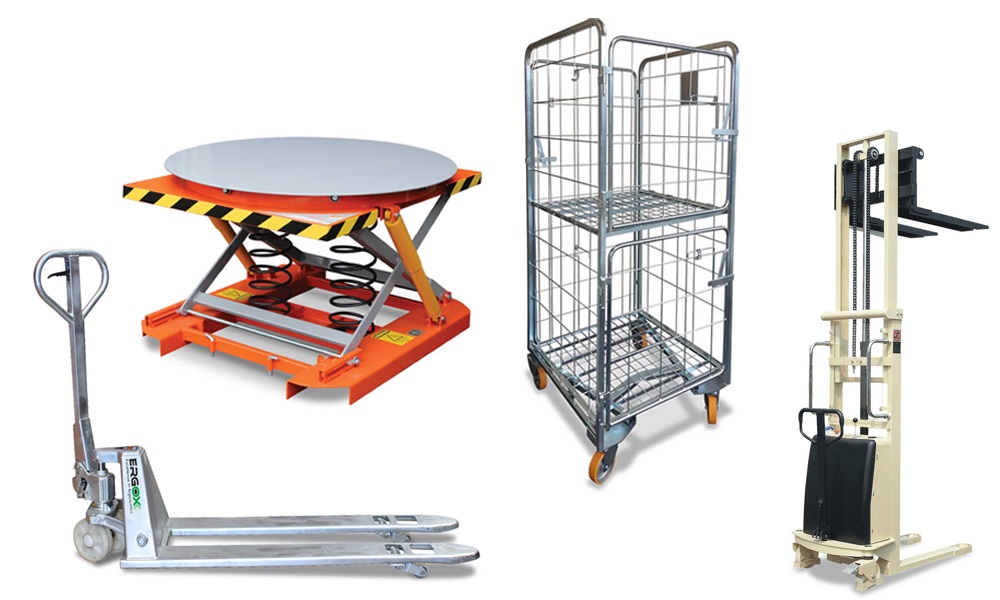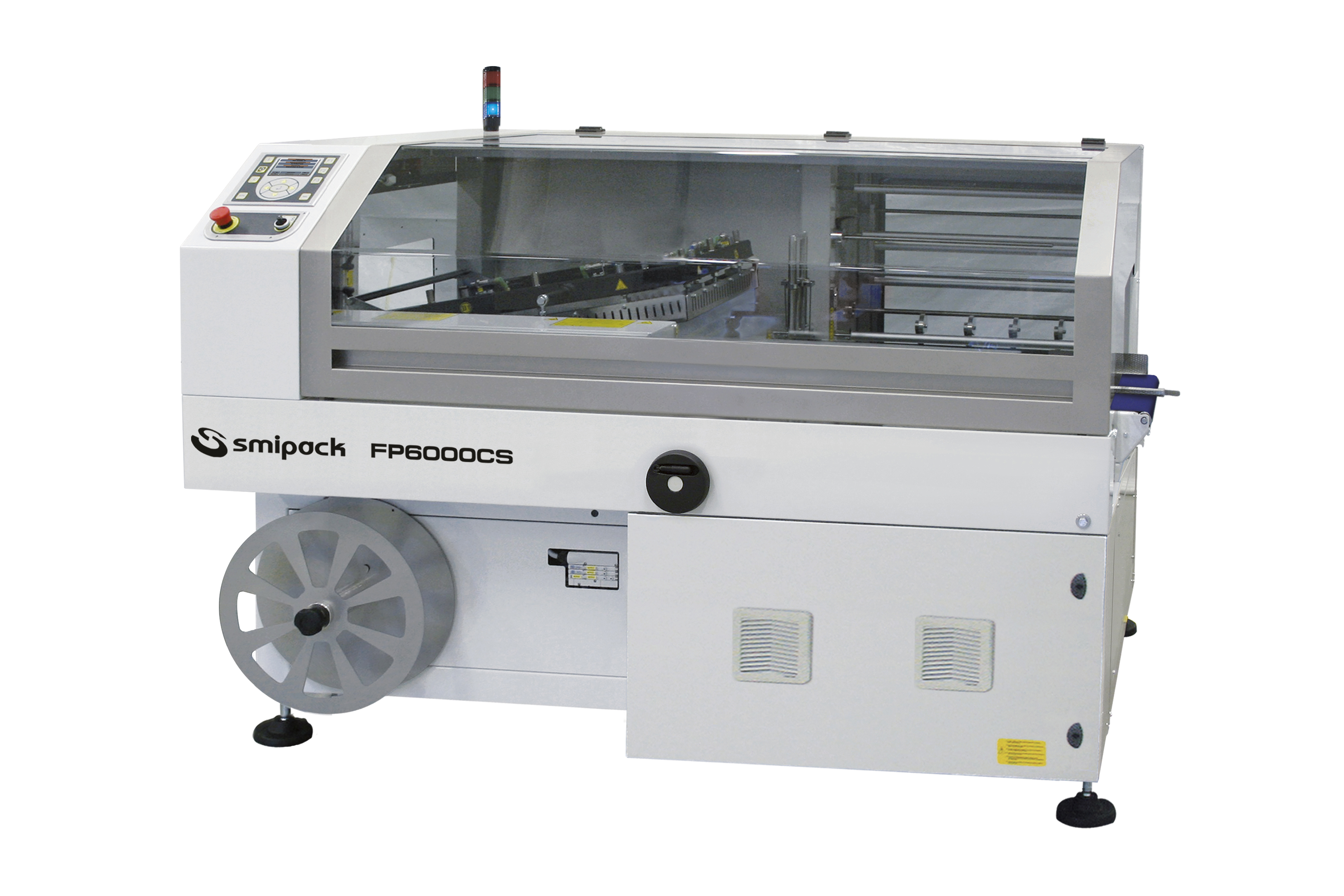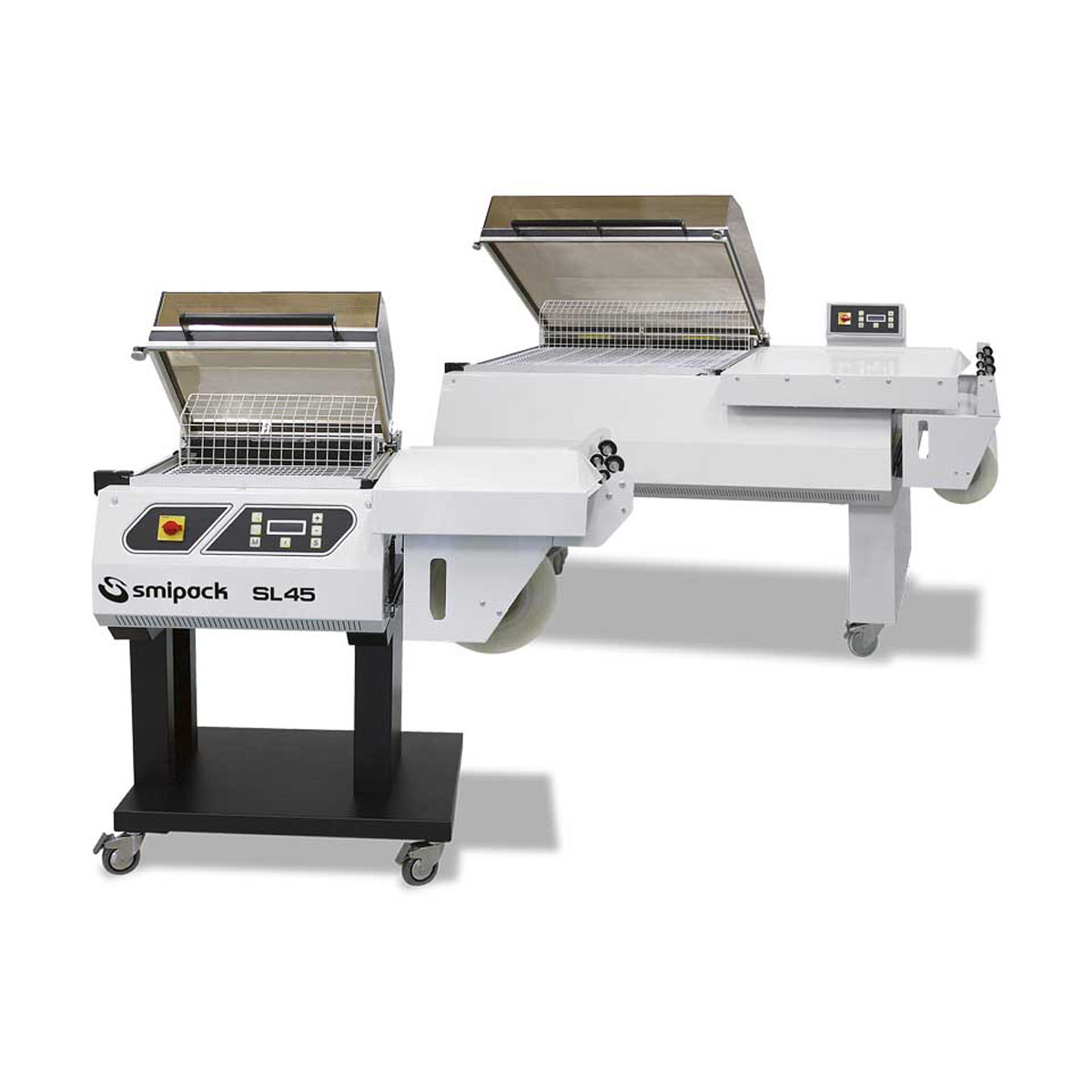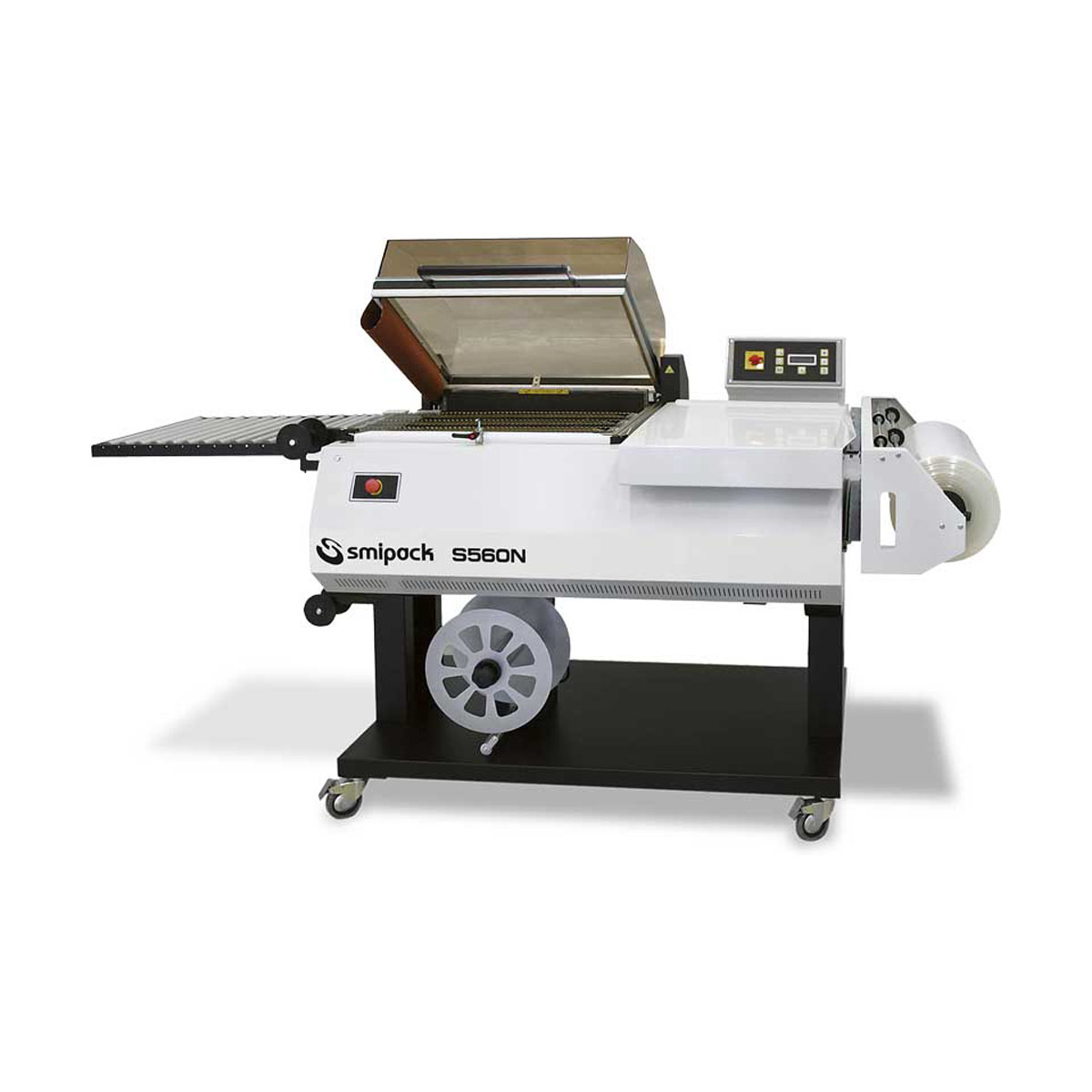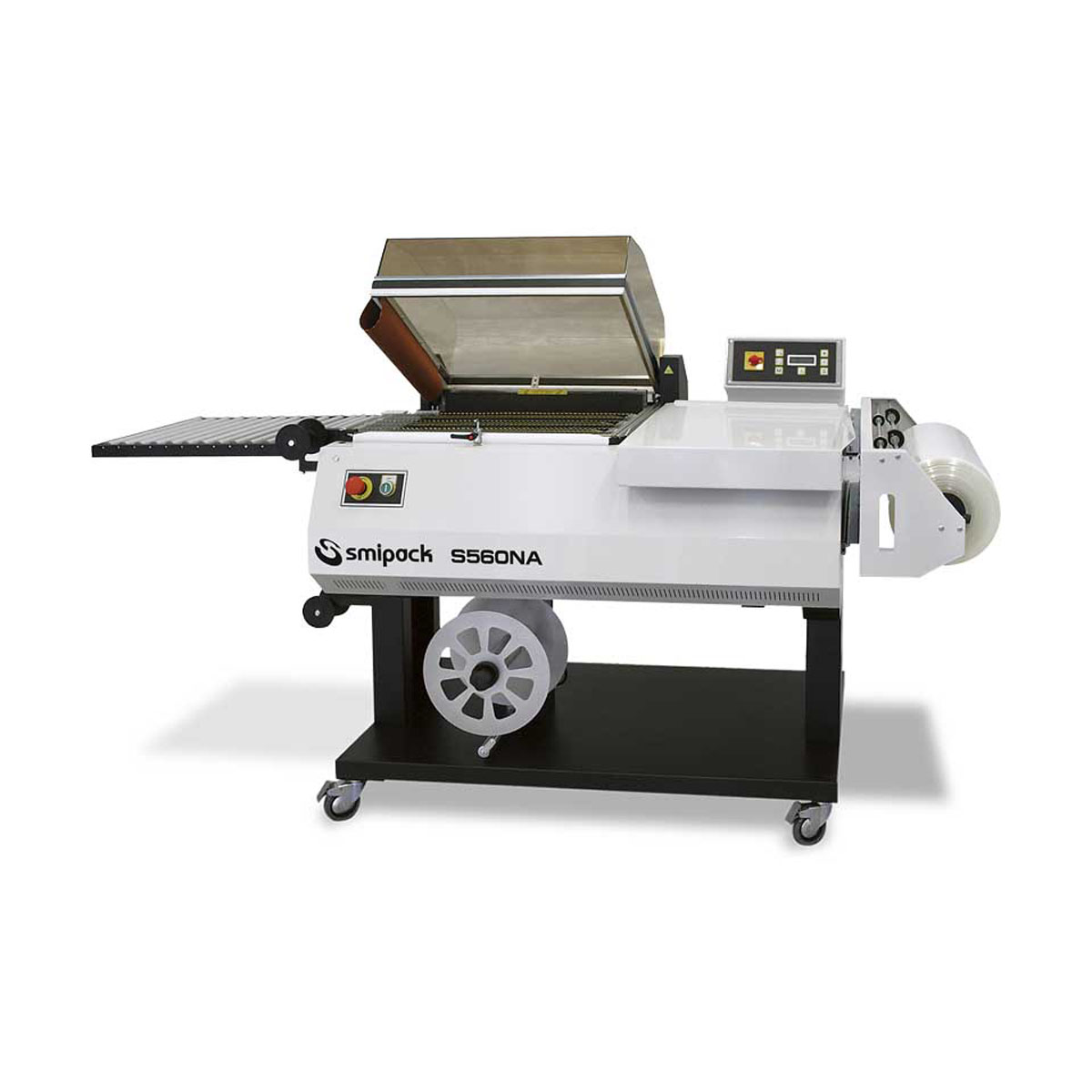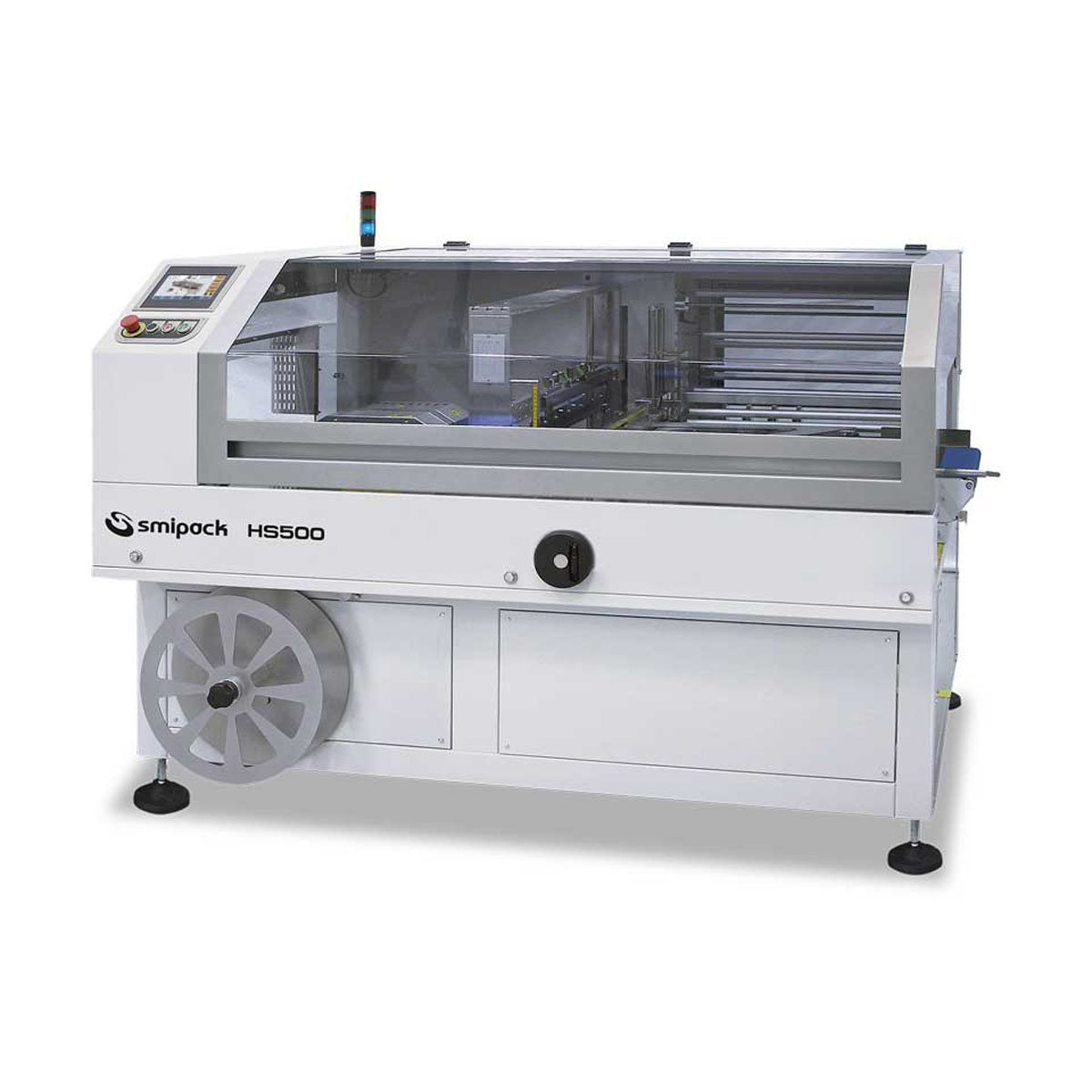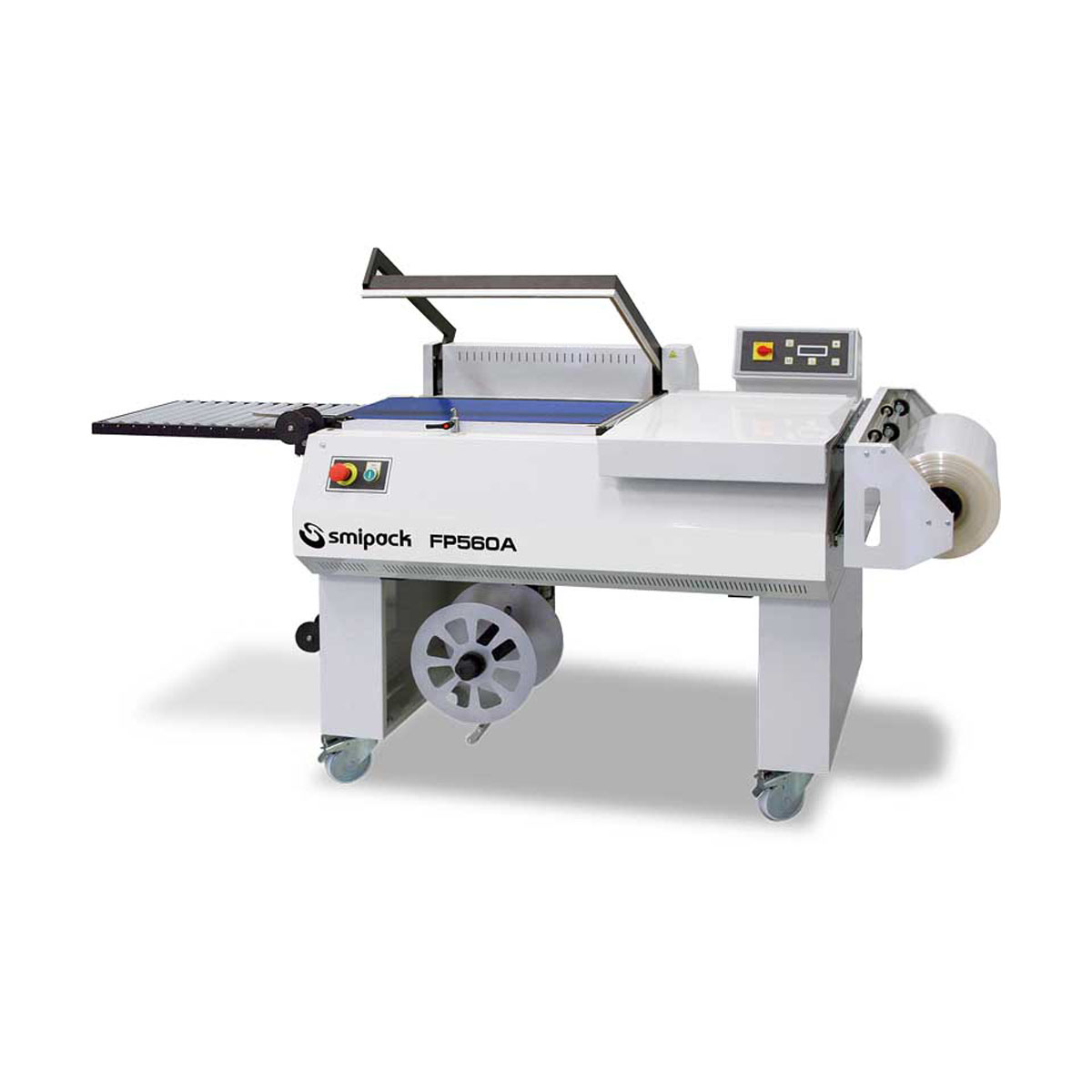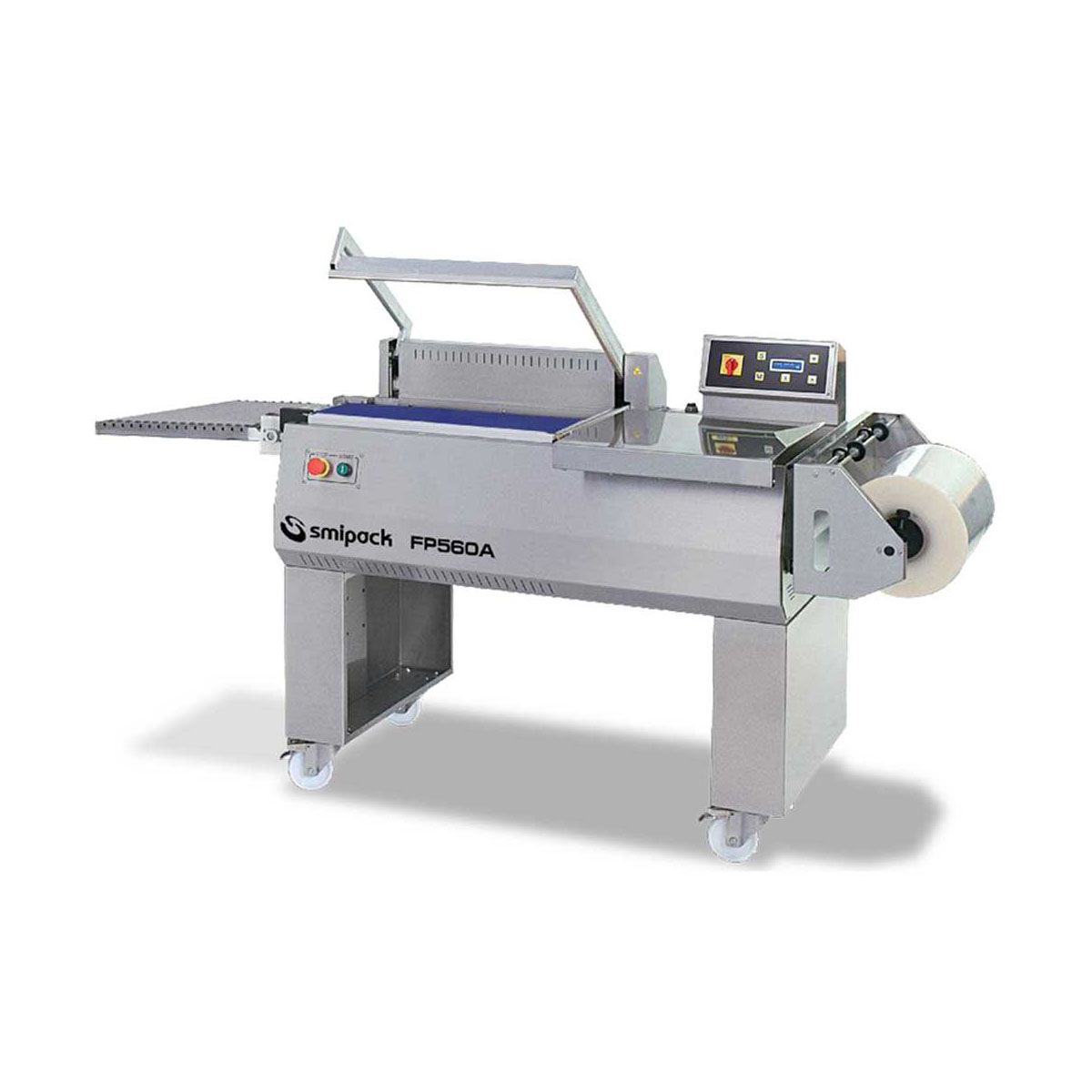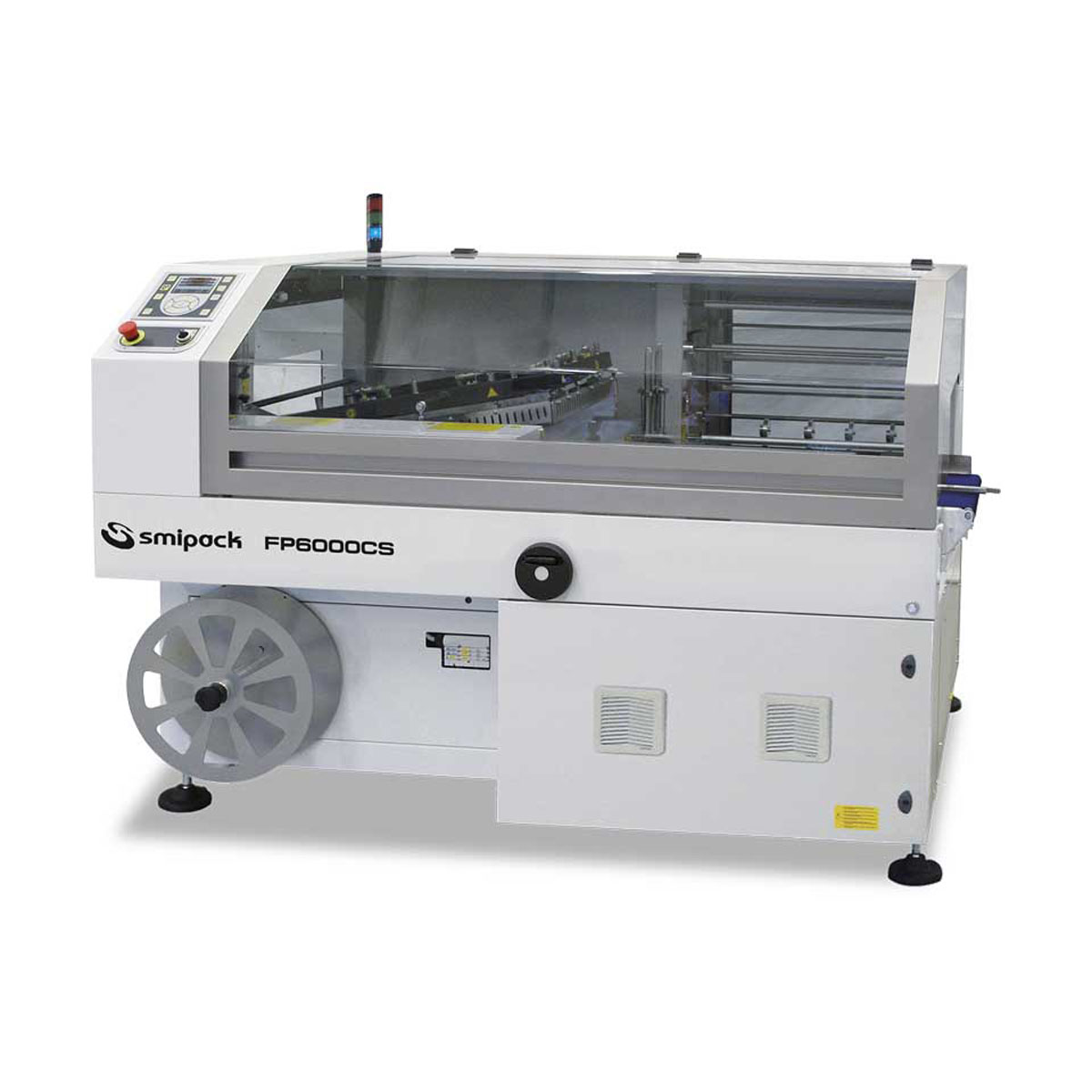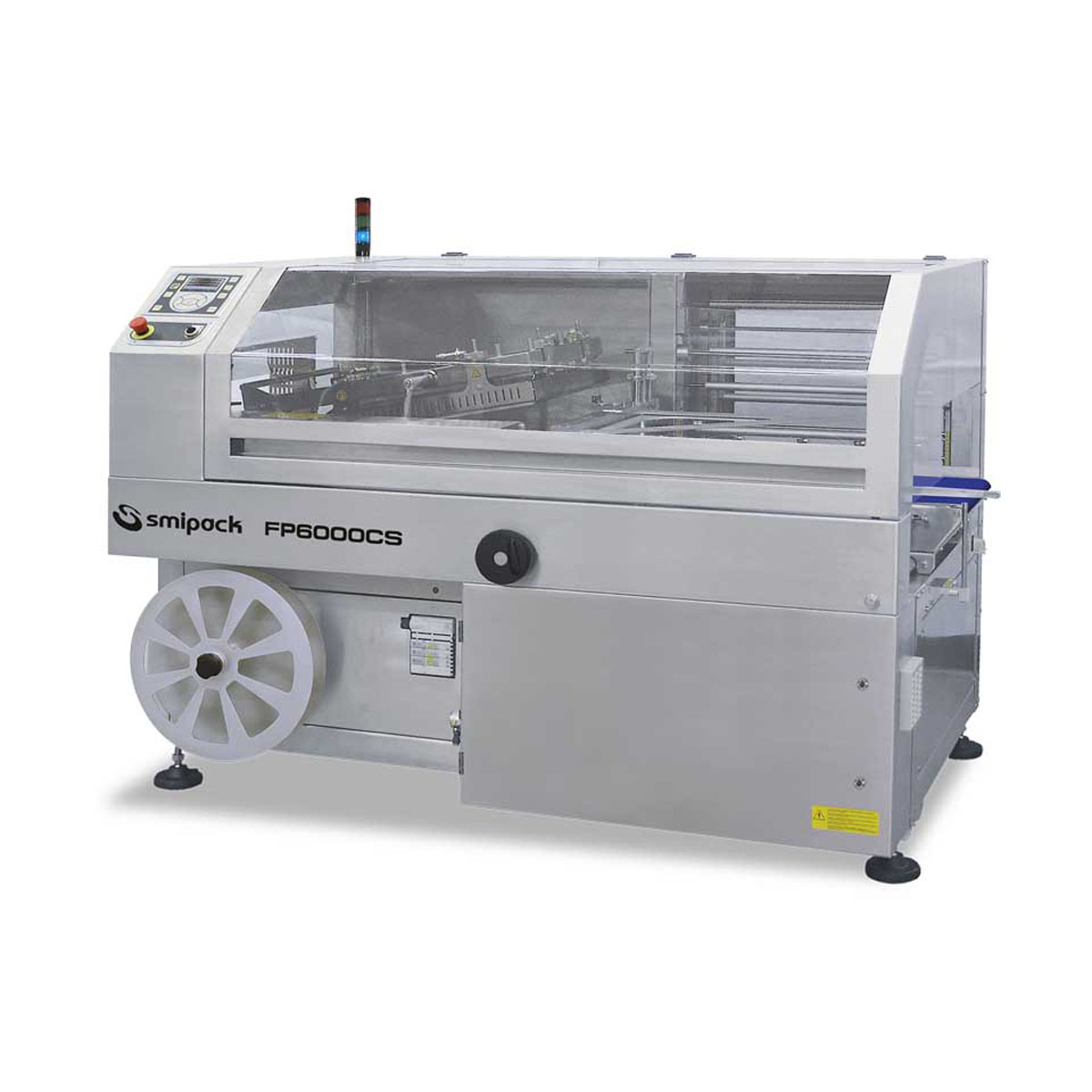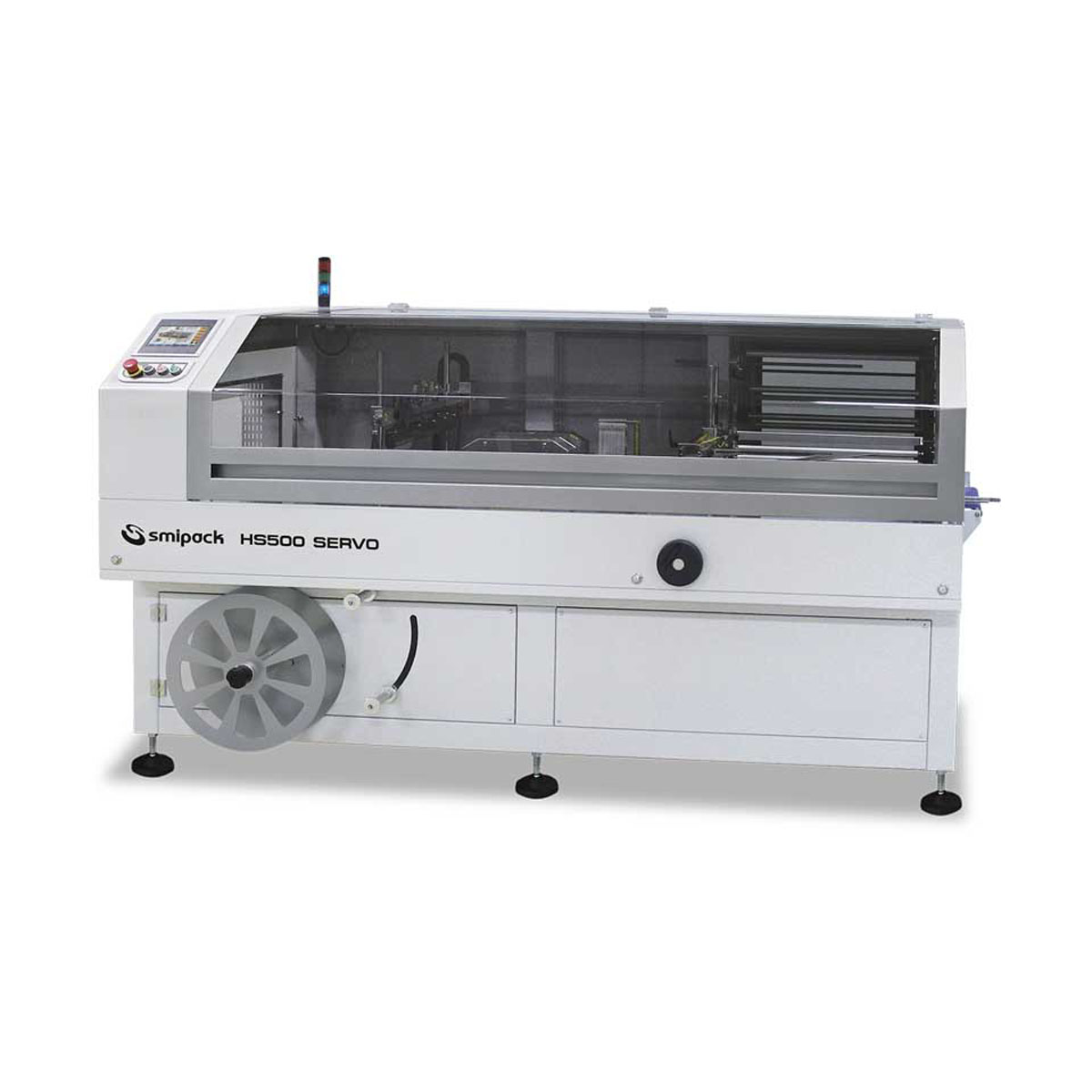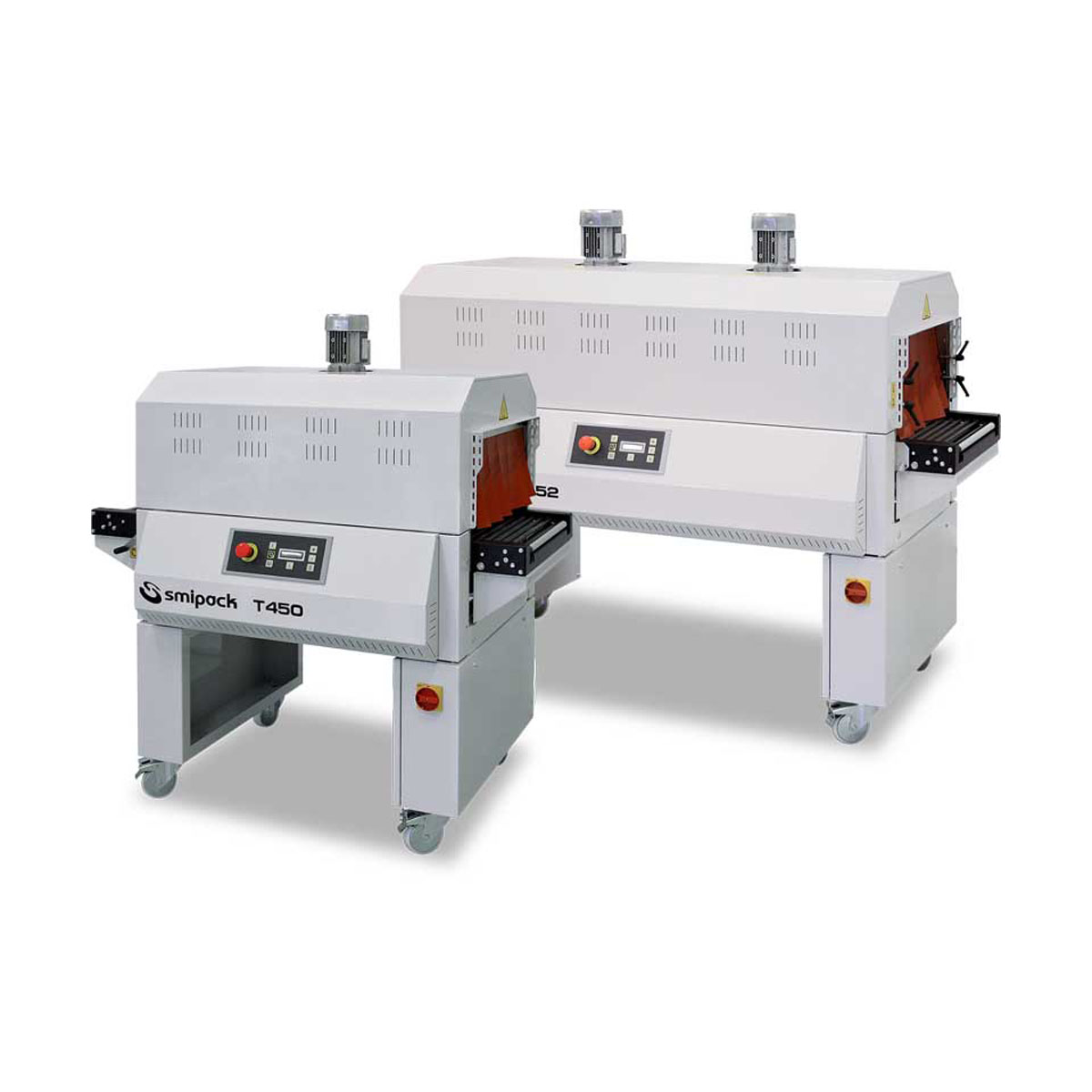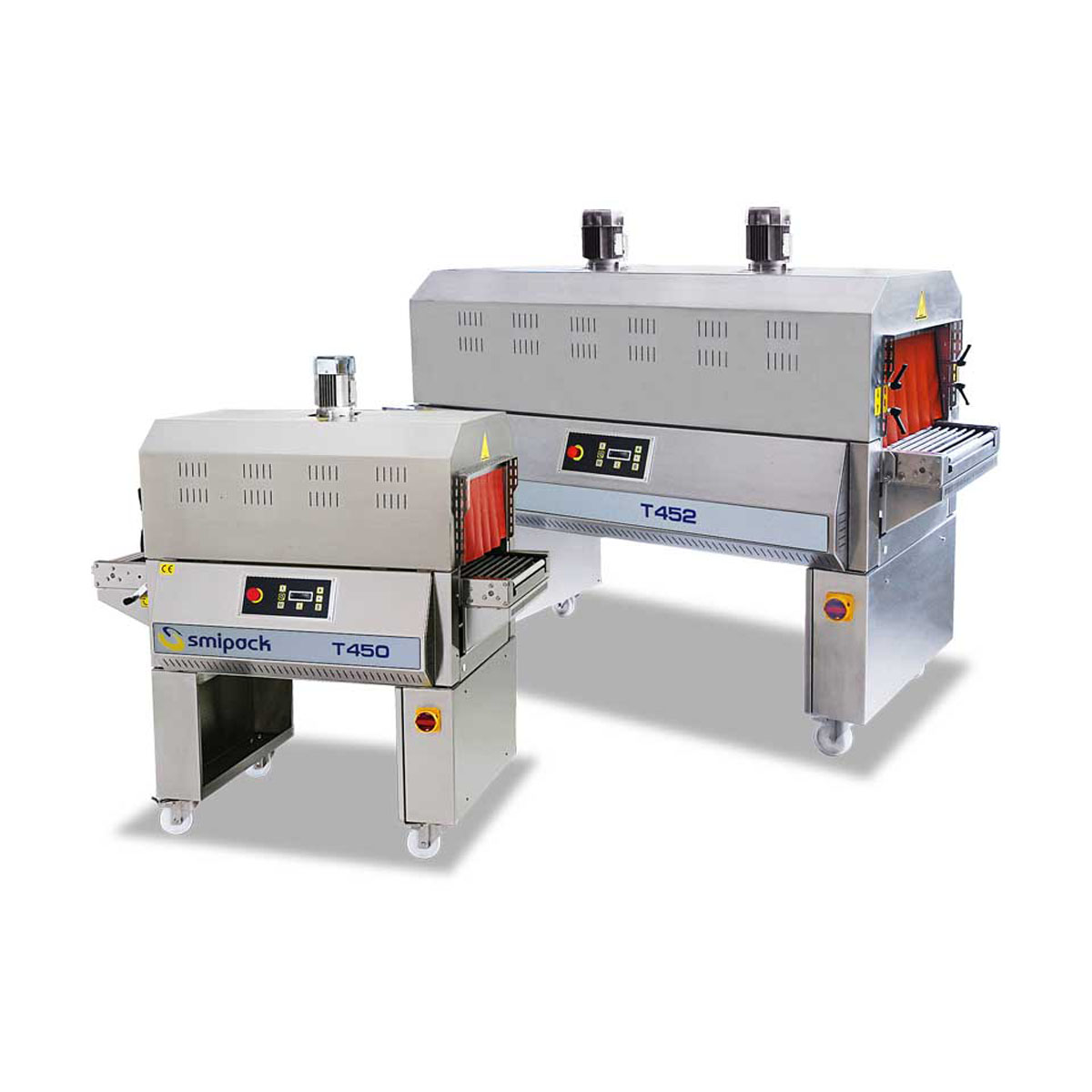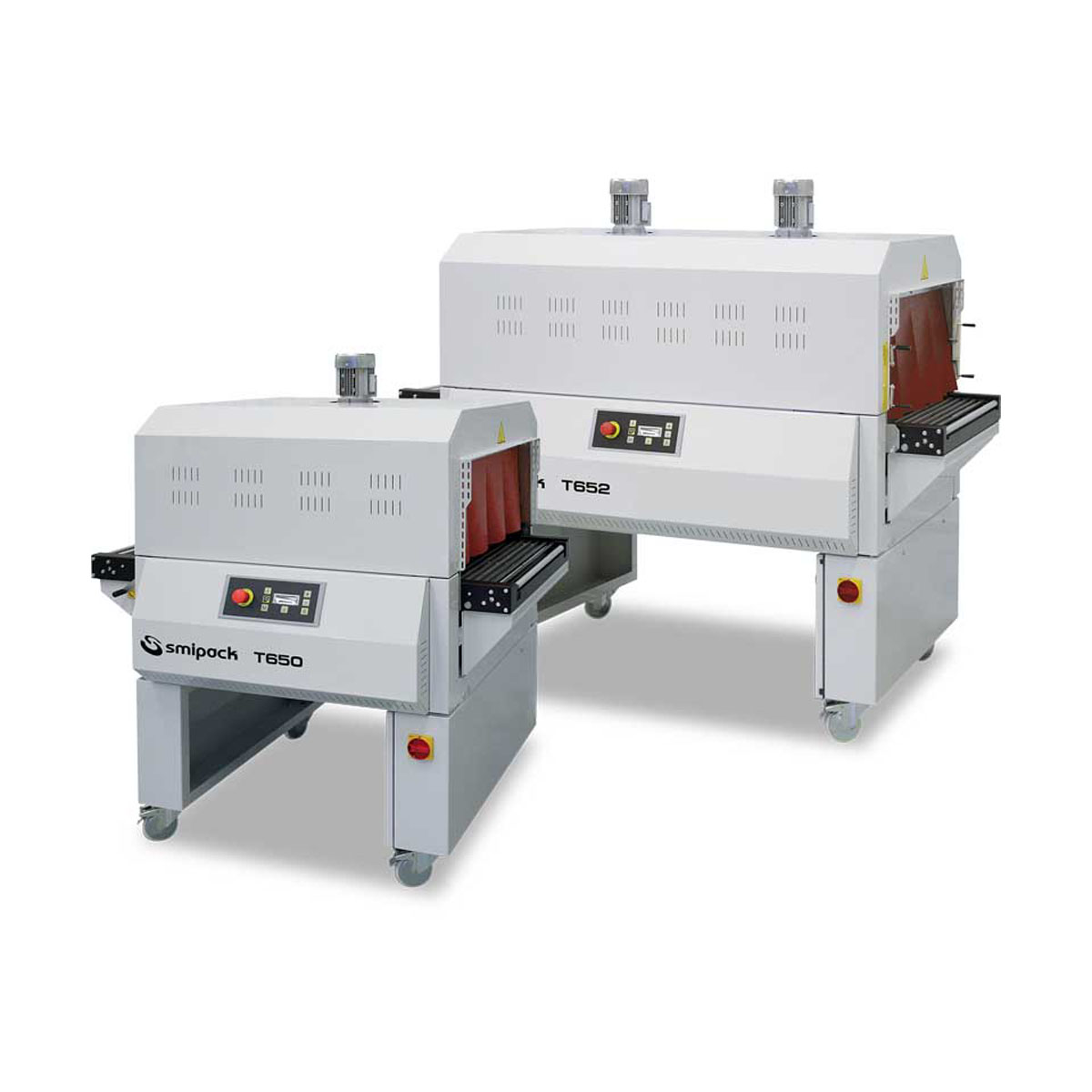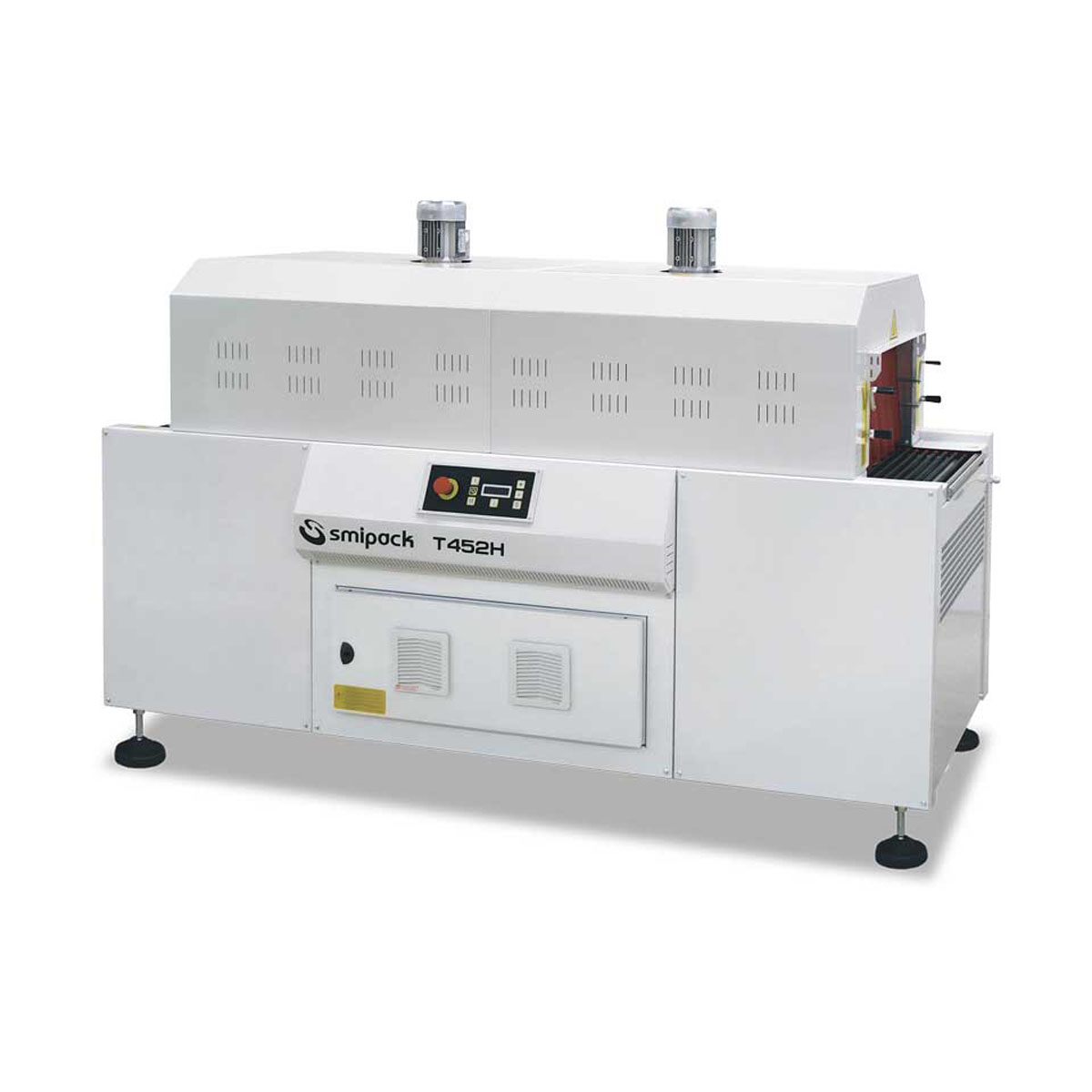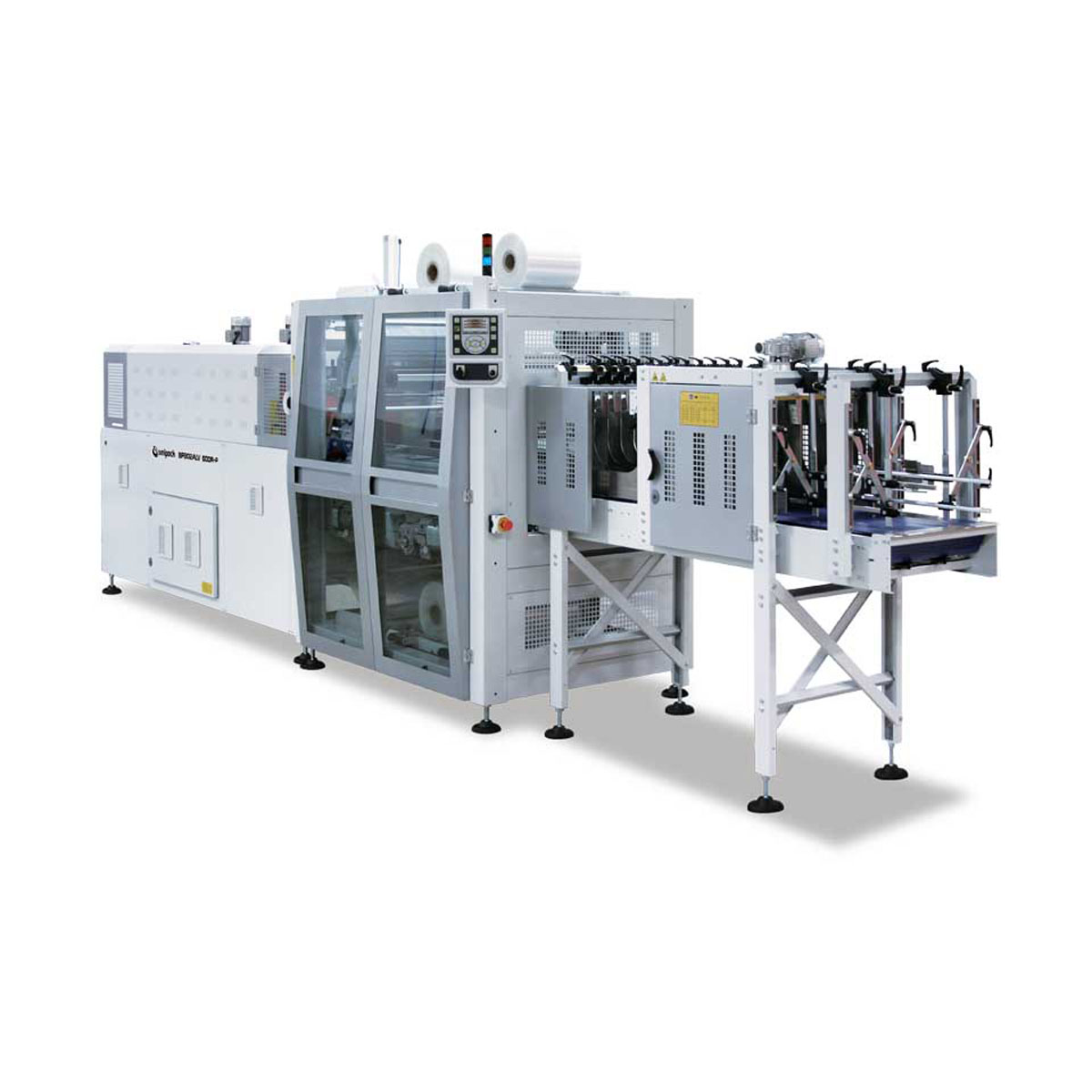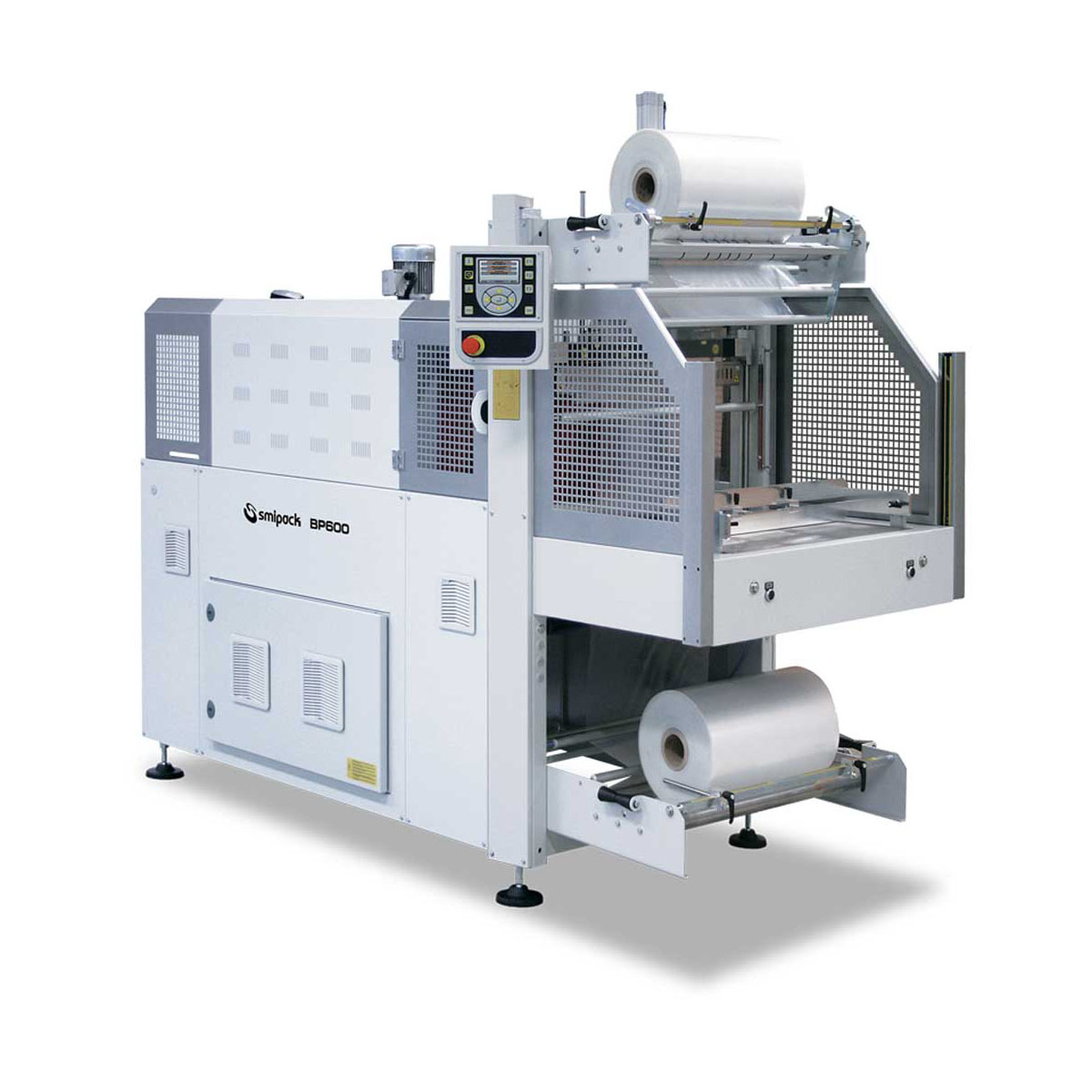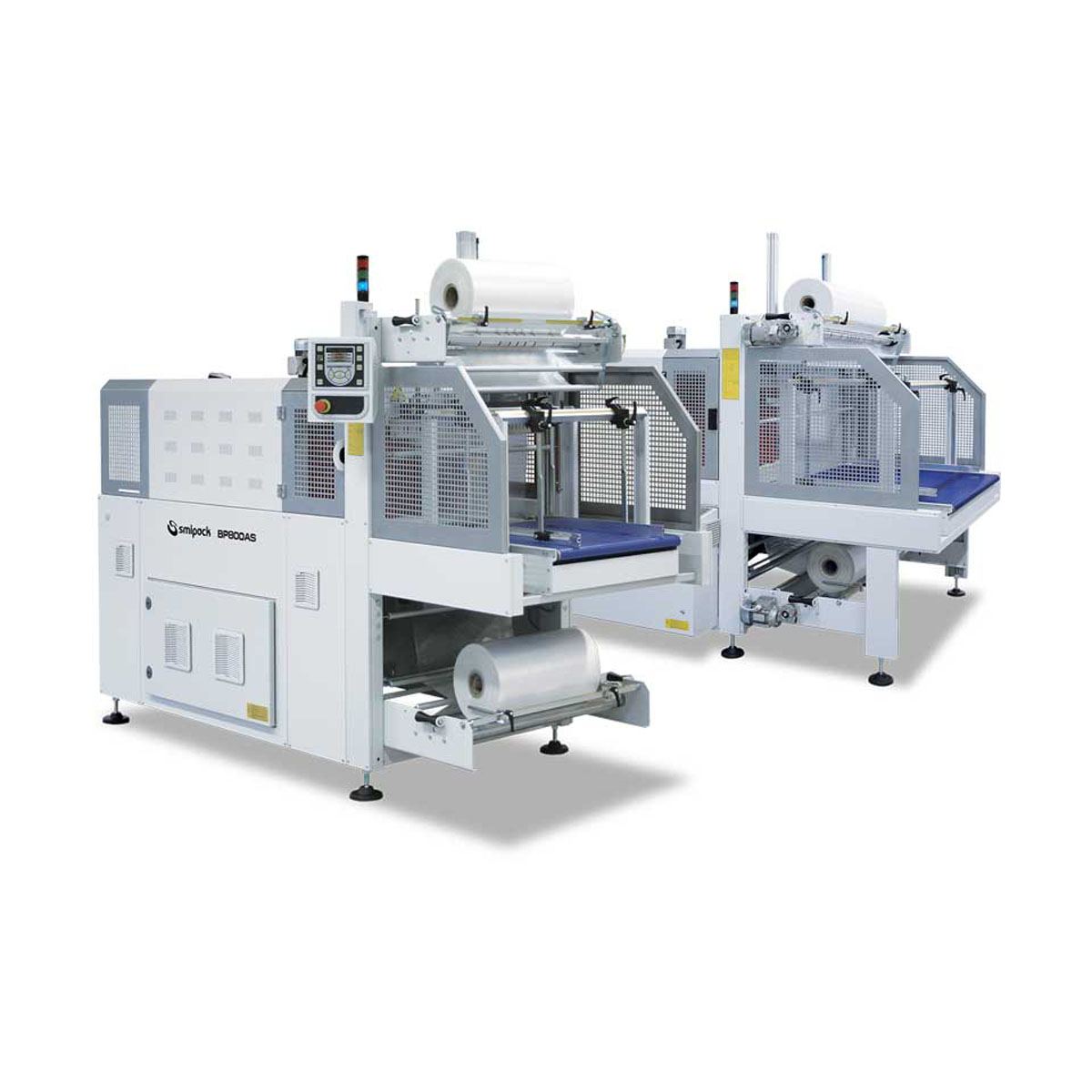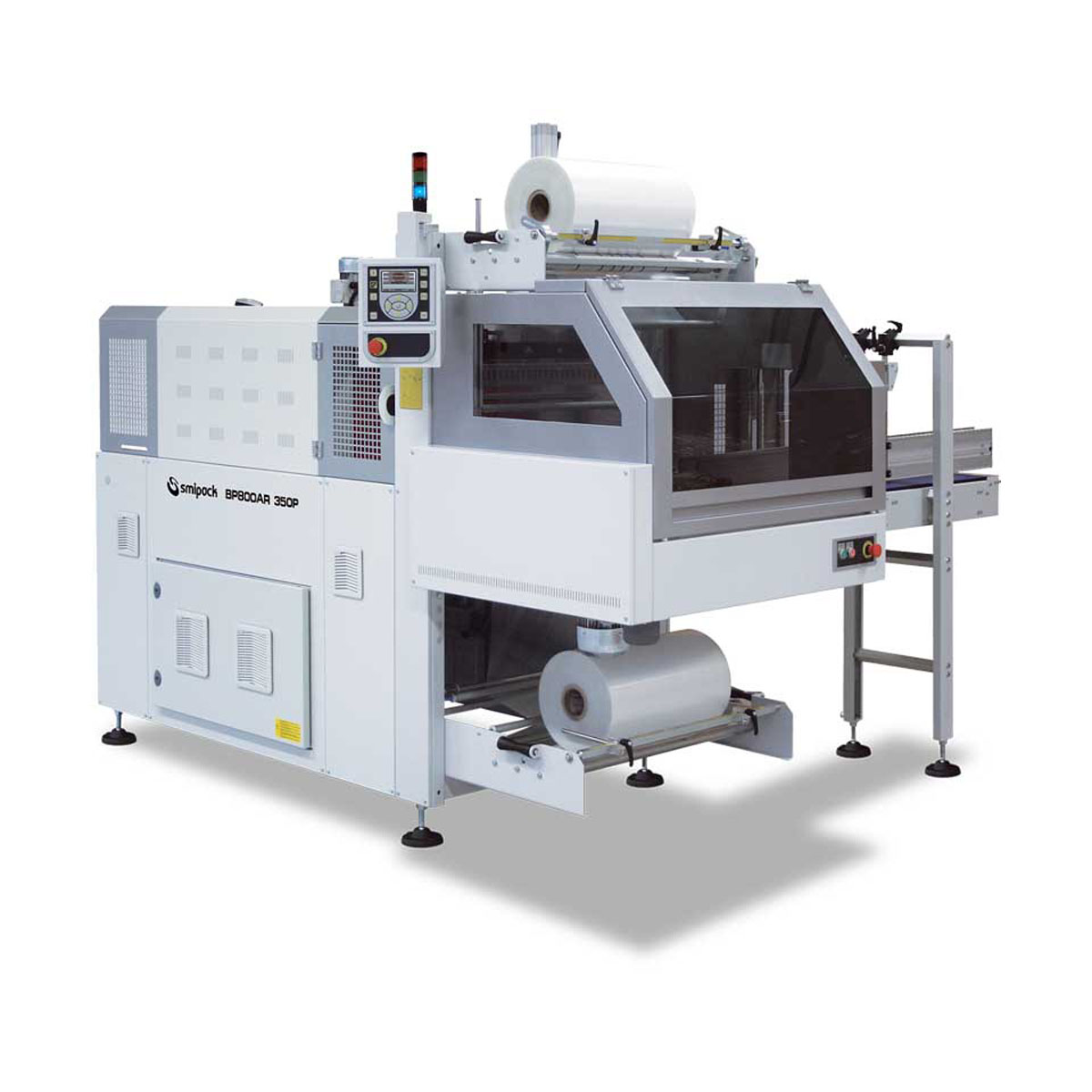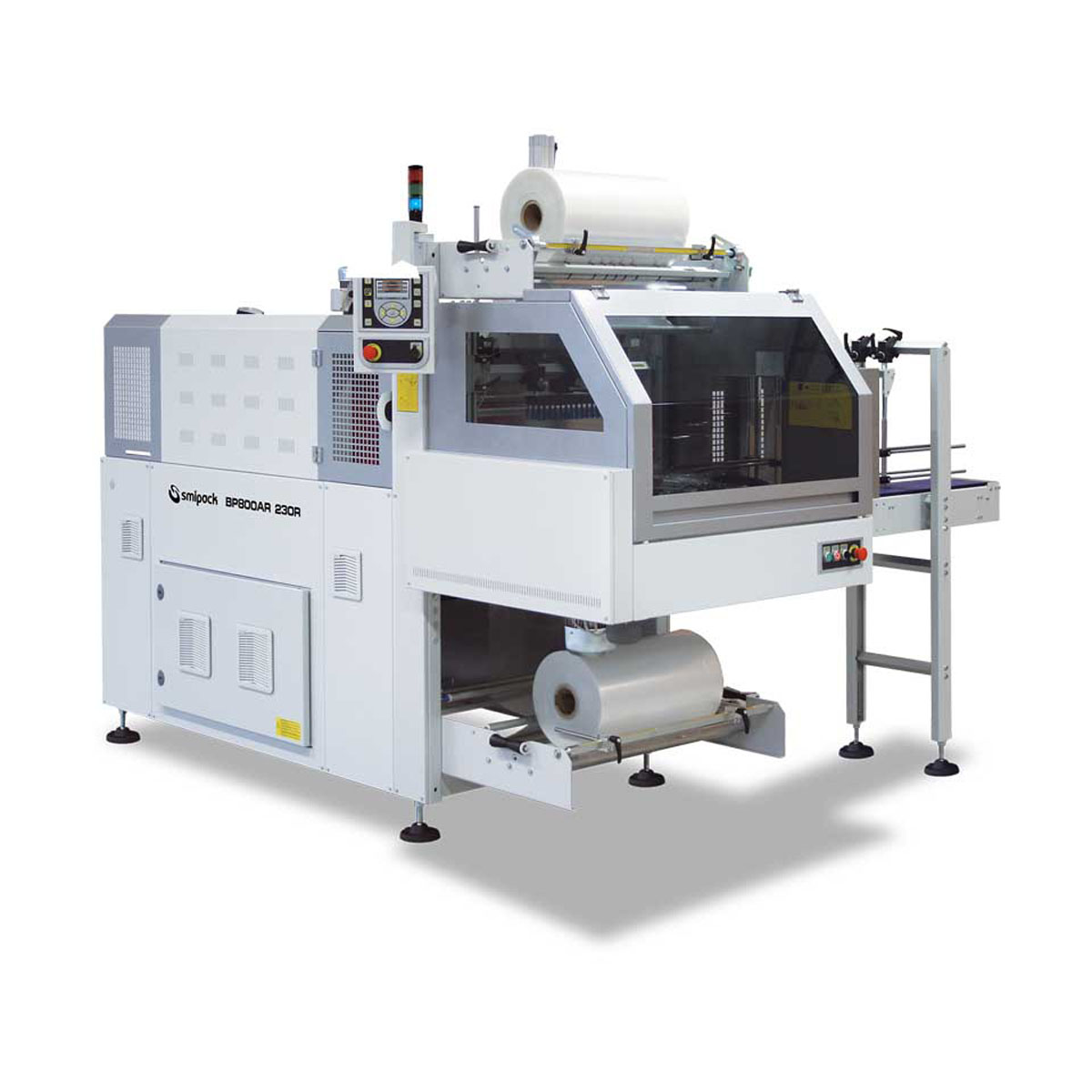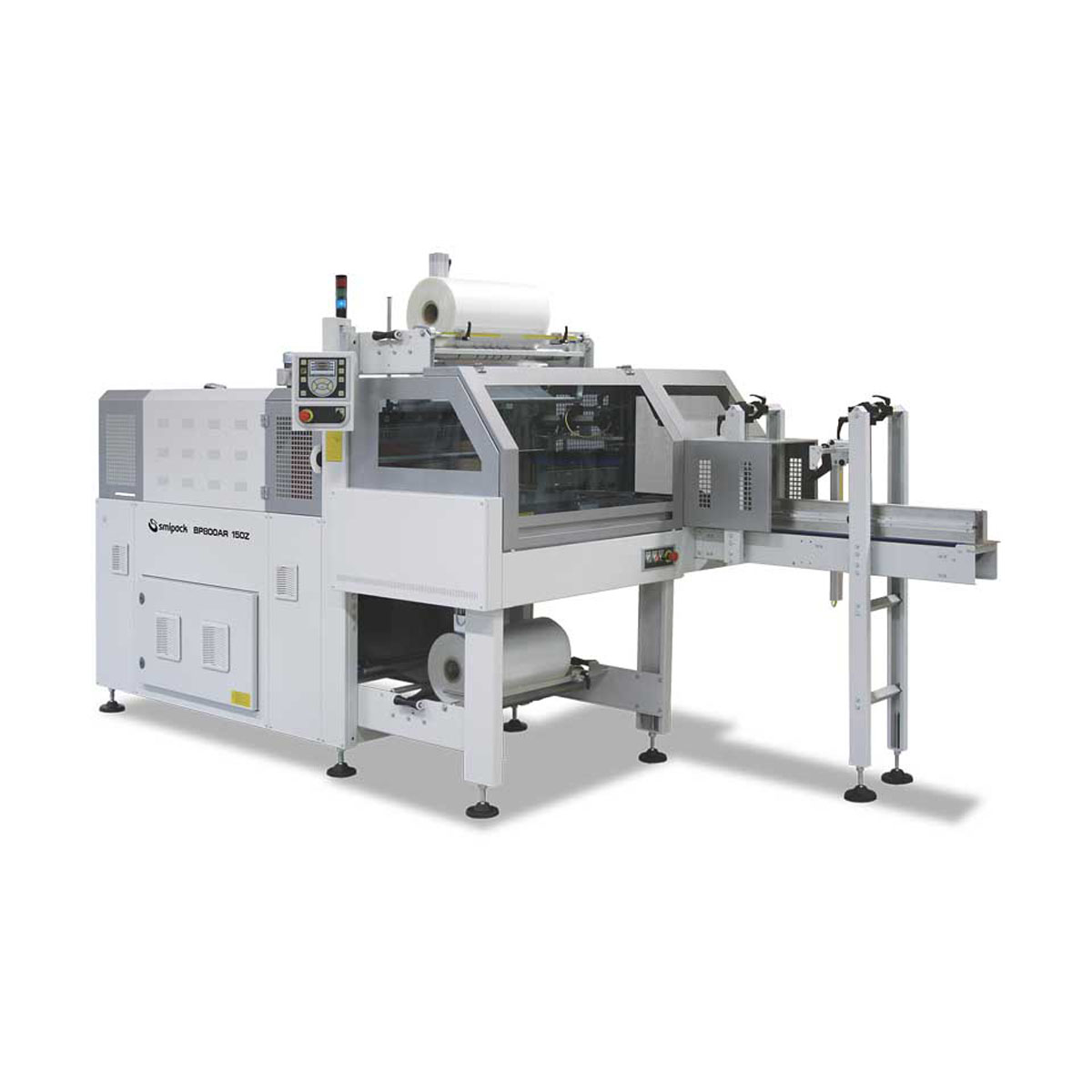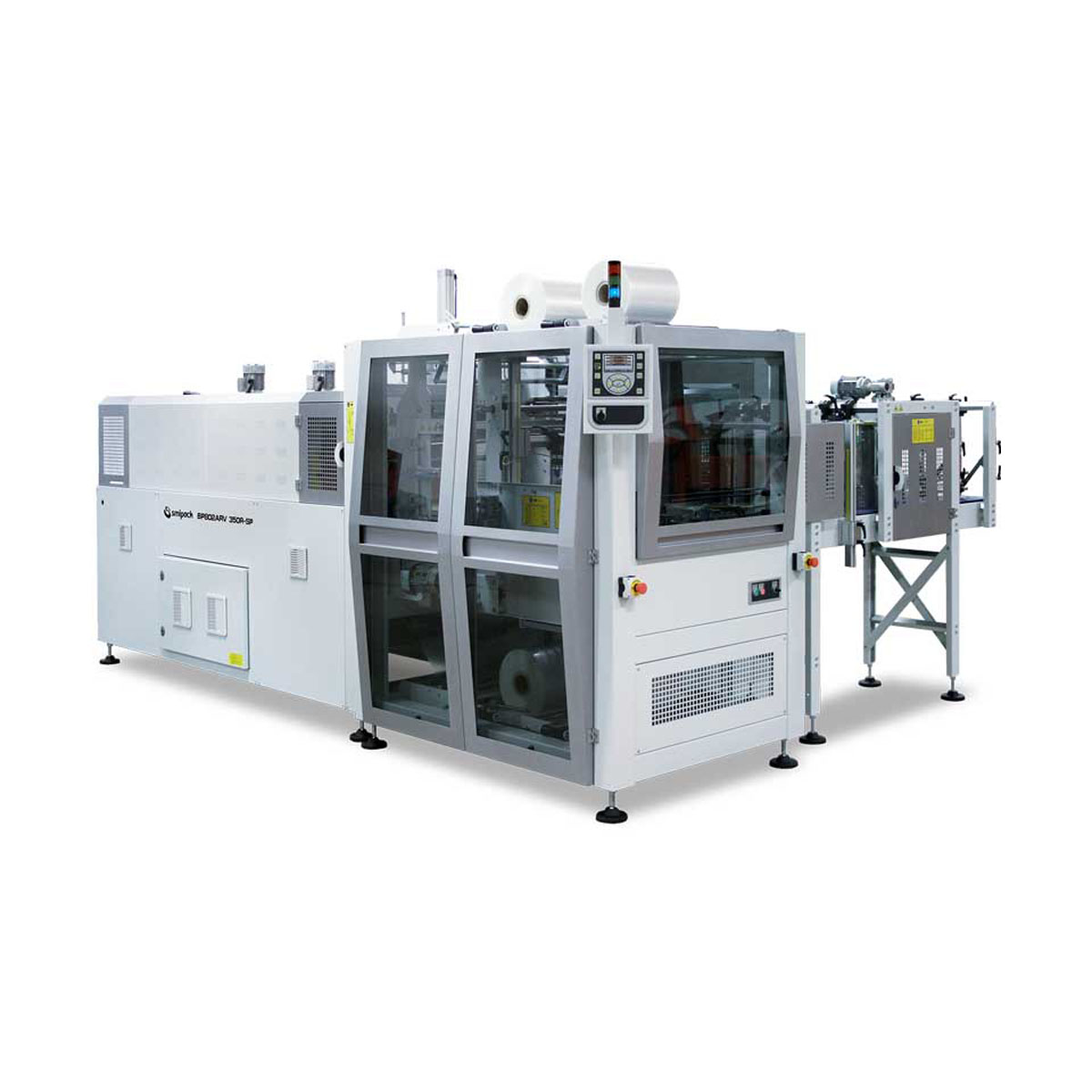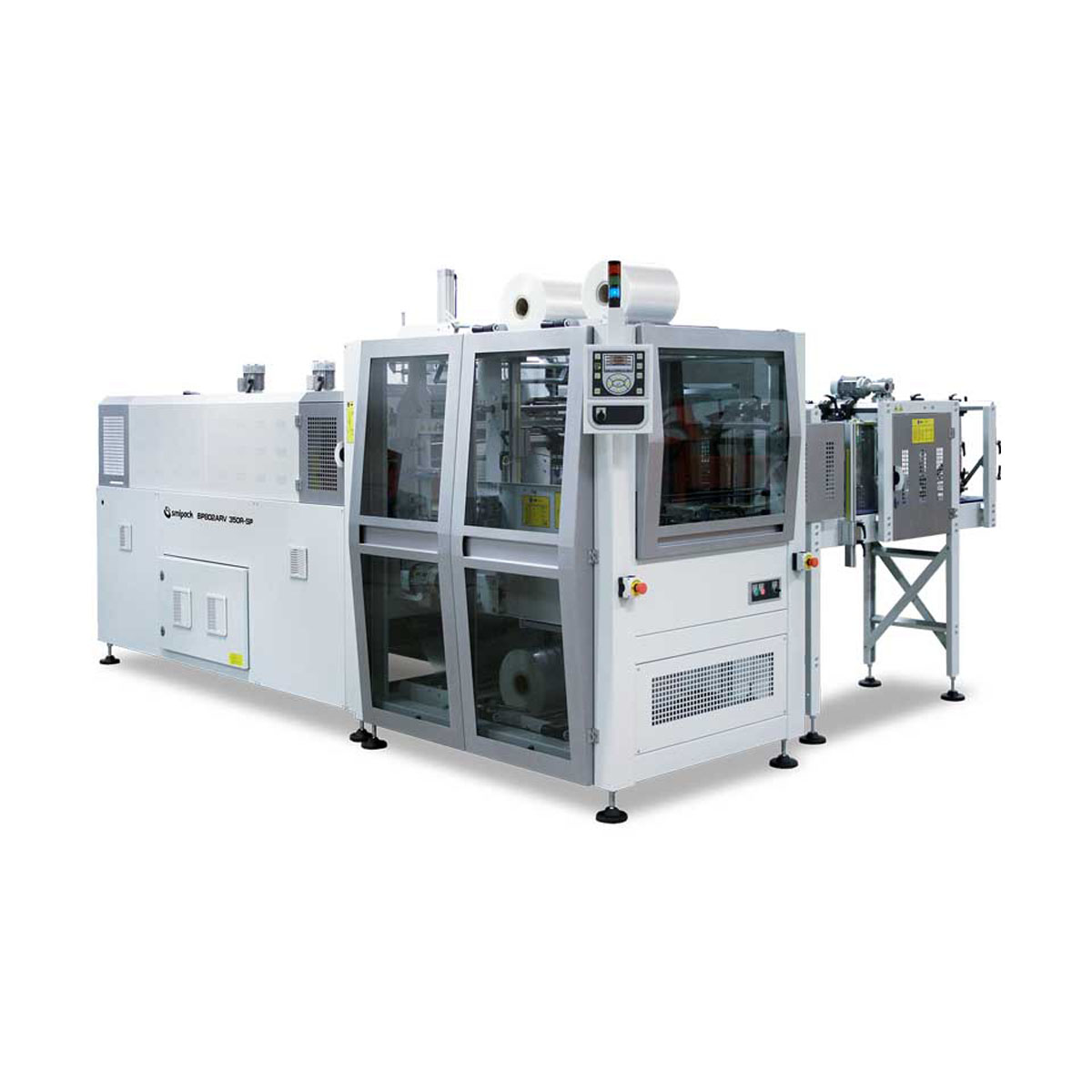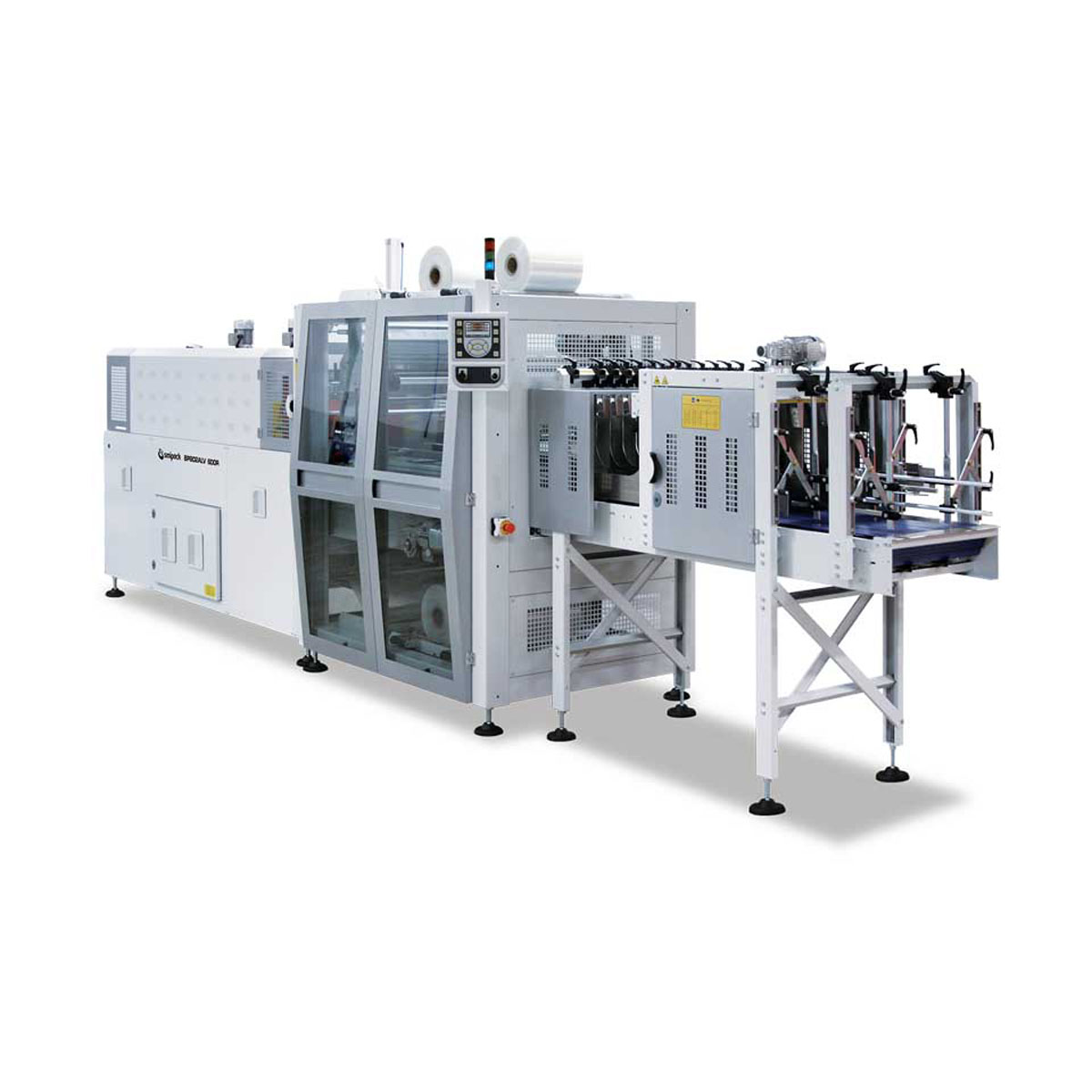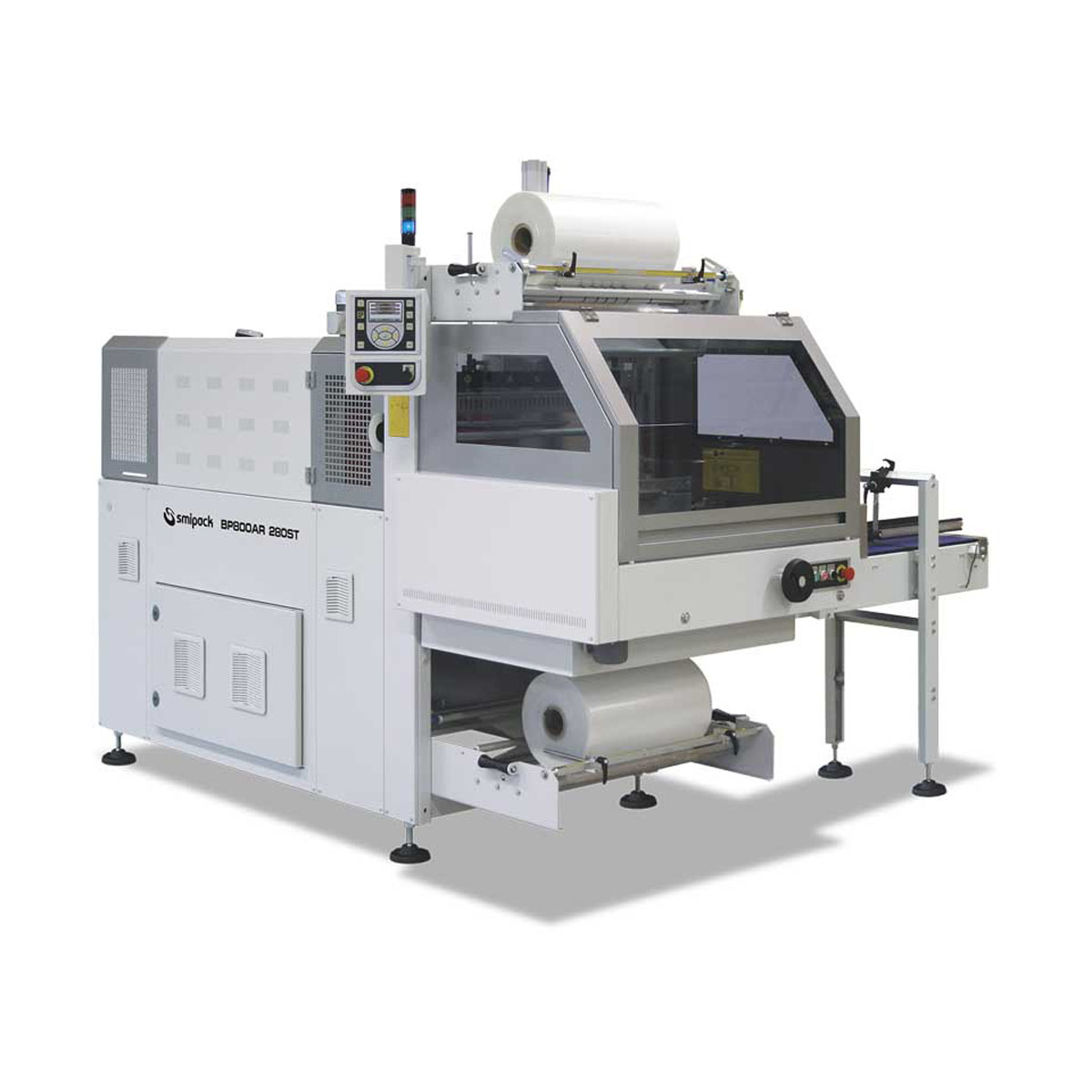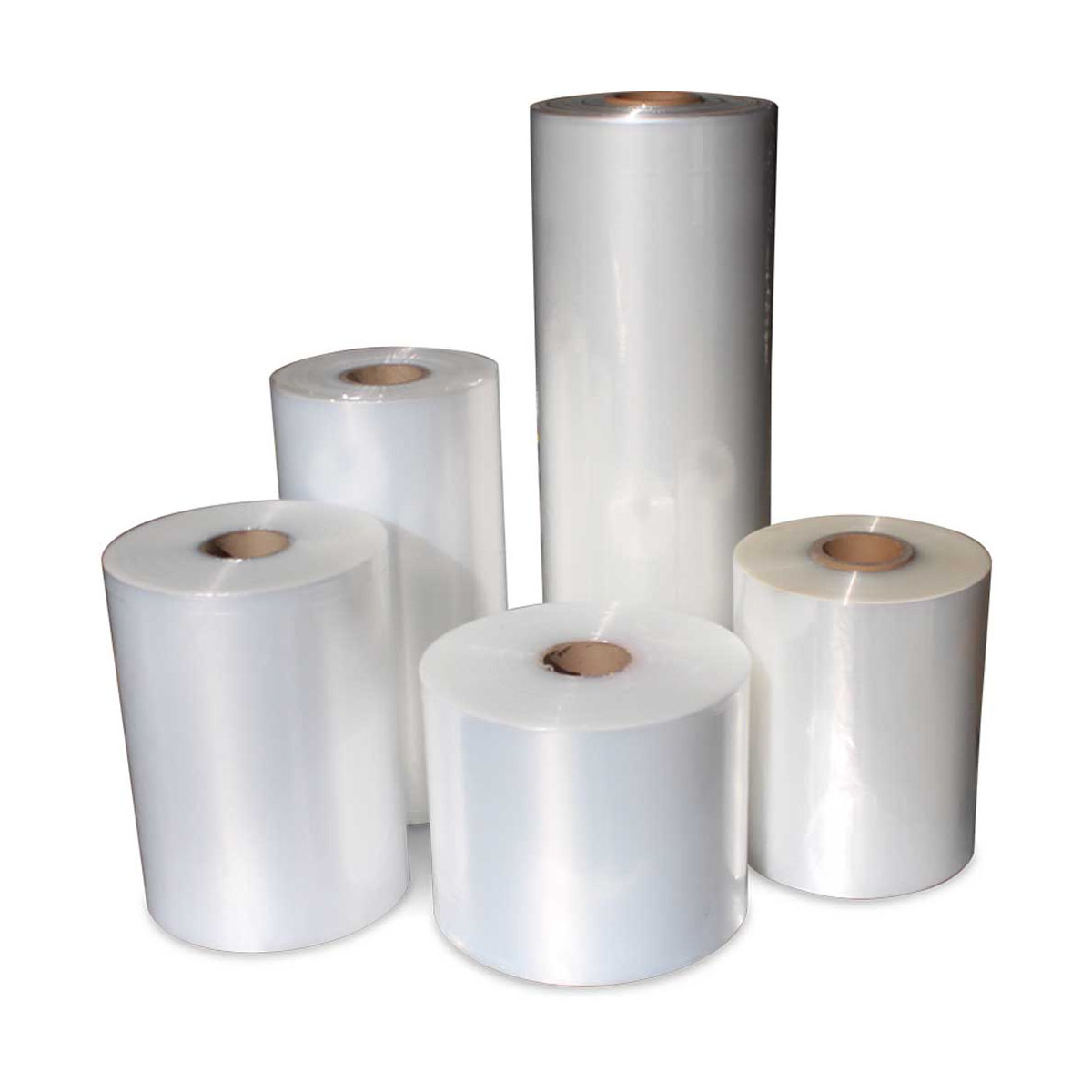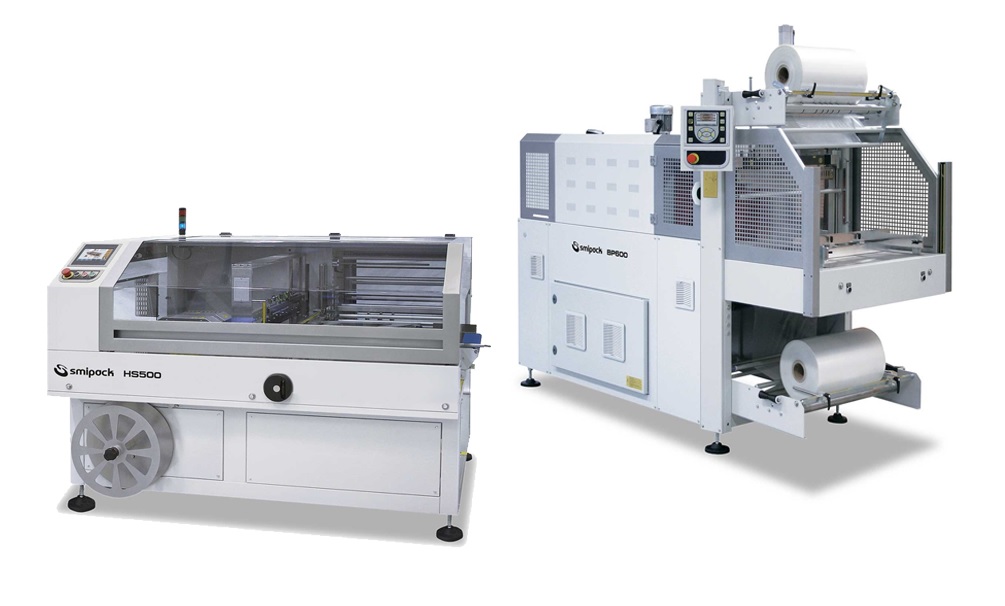Additional automated shrink wrap machine benefits include:
- Transparent film showcases products
- No changeover required for varying product sizes
- High-speed, continuous motion
- Little-to-no operator assistance required
- Can be stand-alone or combined with heat tunnels
- Results in easy-to-handle, attractive bundles
- From semi-automatic to fully customised automated systems, we're confident our passion for sustainable packaging is exemplified in our line of shrink wrapper machines.
Most product cases used with shrink bundling weigh several pounds. A single wound (flat) polyethylene shrink film is used to hold and secure multiple products together. Thicknesses vary from 2 mils up to 6 mils. Shrink bundling is used for packaging cases of drinks, canned goods, securing heavy products, and more.
Shrink Bundling Machinery
Shrink bundling machinery uses a lay-flat polyethylene shrink bundling film to secure heavy bundles of products. Common uses for shrink bundlers are packaging bottles of drinks, petfood, and canned goods.
Shrink bundling machinery relates to any sealers, tunnels, or add-ons made for shrink bundling applications. Bundling machinery is made to have stronger seals and produce more heat than standard retail shrink wrapping.
Most product cases used with shrink bundling weigh several pounds. A single wound (flat) polyethylene shrink film is used to hold and secure multiple products together. Thicknesses vary from 2 mils up to 6 mils. Shrink bundling is used for packaging cases of drinks, canned goods, securing heavy products, and more.
The two primary pieces of shrink bundling machinery are the bundler and shrink tunnel. The sealer or shrink bundler uses a heated sealing bar to seal and cut the film for each package being wrapped. Shrink bundling sealers have more durable sealing blades than standard shrink sealers. The preferred sealing blade for shrink bundling is hot knife sealers. A hot knife sealer can last years, much different than wire sealers common in retail shrink wrapping.
Heat tunnels used for shrink bundling have larger heater banks, blower motors, and external cooling fans. Shrink bundling film shrinks as it cools, the external cooling fans help to speed up the cooling process. Shrink bundling tunnels also have nylon or a non-stick conveyor belt going through them.
The sealers and tunnels used for shrink bundling are built to handle higher temperatures. Thicker shrink bundling film requires more heat to shrink and seal. Spending the extra money on machinery built for bundling is well worth the investment.
Shrink Bundler Information
Shrink bundlers are used with two single-wound (flat) film rolls to wrap and unitize multiple products together. Shrink bundlers use a heated sealing bar to seal and cut the single wound bundling film. The single seal creates two open sides on each end of the product. The open ends are often referred to as bulls-eyes.
A shrink bundler encloses the product(s) in the shrink film, but heat still needs to be applied. Some shrink bundlers are all-in-one systems that offer the bundler and heat tunnel as one unit. Other bundlers are only the bundle sealers and require a shrink tunnel to heat the film.
Shrink bundlers have large openings for stacked cases, bottles, and other heavy products. The air operated opening closes to make a seal after the product passes. The seals are thicker and stronger than other wire shrink sealers.
After the seal is complete, a conveyor transports the product(s) into the shrink tunnel. The conveyor belt features stronger motors for moving heavier products. All shrink bundlers should feature an easily accessible E-stop and additional safety features to maintain workplace safety standards.
HEAT SEALING MACHINES
A heat sealer is a machine used to seal products, packaging, and other thermoplastic materials using heat. This can be with uniform thermoplastic monolayers or with materials having several layers, at least one being thermoplastic. Heat sealing can join two similar materials together or can join dissimilar materials, one of which has a thermoplastic layer.
Applications for the heat sealing process
Heat seal connectors are used to join LCDs to PCBs in many consumer electronics, as well as in medical and telecommunication devices.
Heat sealing of products with thermal adhesives is used to hold clear display screens onto consumer electronic products and for other sealed thermo-plastic assemblies or devices where heat staking or ultrasonic welding are not an option due to part design requirements or other assembly considerations.
Heat sealing also is used in the manufacturing of blood test film and filter media for the blood, virus and many other test strip devices used in the medical field today. Laminate foils and films often are heat sealed over the top of thermoplastic medical trays, Microtiter (microwell) plates, bottles and containers to seal and/or prevent contamination for medical test devices, sample collection trays and containers used for food products.
Plastic bags and other packaging is often formed and sealed by heat sealers. Medical and fluid bags used in the medical, bioengineering and food industries. Fluid bags are made out of a multitude of varying materials such as foils, filter media, thermoplastics and laminates.
Types of heat sealing Machines
Hot bar sealers- have heated tooling kept at a constant temperature (also known as Direct Contact Thermal Sealing). They use one or more heated bars, irons, or dies which contact the material to heat the interface and form a bond. The bars, irons and dies have various configurations and can be covered with a release layer or utilise various slick interposer materials (i.e. Teflon films) to prevent sticking to the hot tooling.
Continuous heat sealers- (also known as Band type heat sealers) utilise moving belts over heating elements.
Impulse heat sealers- have heating elements (one or two) of Nichrome placed between a resilient synthetic rubber and a release surface of film or fabric. The heating elements are not continuously heated; heat is generated only when current flows. When the materials are placed in the heat sealer, they are held in place by pressure. An electric current heats the heating element for a specified time to create the required temperature. The Jaws hold the material in place after the heat is stopped, sometimes with cooling water: this allows the material to fuse before stress can be applied.
Hot melt adhesive can be applied in strips or beads at the point of joining. It can also be applied to one of the surfaces during an earlier manufacturing step and reactivated for bonding.
Hot wire sealing – involves a heated wire that both cuts the surfaces and joins them with a molten edge bead. This is not usually employed when barrier properties are critical.
Induction sealing is a non-contact type of sealing used for inner seals in bottle caps.
Induction welding heat sealing by non-contact induction
Ultrasonic welding uses high-frequency ultrasonic acoustic vibrations to workpieces being held together under pressure to create a weld.
A type of heat sealer is also used to piece together plastic side panels for light-weight agricultural buildings such as greenhouses and sheds. This version is guided along the floor by four wheels.
Seal quality
Good seals are a result of time, temperature and pressure for the correct clean material. Several standard test methods are available to measure the strength of heat seals. In addition, package testing is used to determine the ability of completed packages to withstand specified pressure or vacuum. Several methods are available to determine the ability of a sealed package to retain its integrity, barrier characteristics, and sterility.
Heat sealing processes can be controlled by a variety of quality management systems such as HACCP, statistical process control, ISO 9000, etc. Verification and validation protocols are used to ensure that specifications are met and final materials/packages are suited for end-use.
Our food package and bottle case packer machines use superior technology for materials such as cardboard, polyethylene film, and the combination of the two. These machines rely on film only to pack consumer goods securely, so you don’t have to worry about product loss or damage during distribution. This collection includes product shrink wrap machines, wrap-around case packers, and combination packers.

